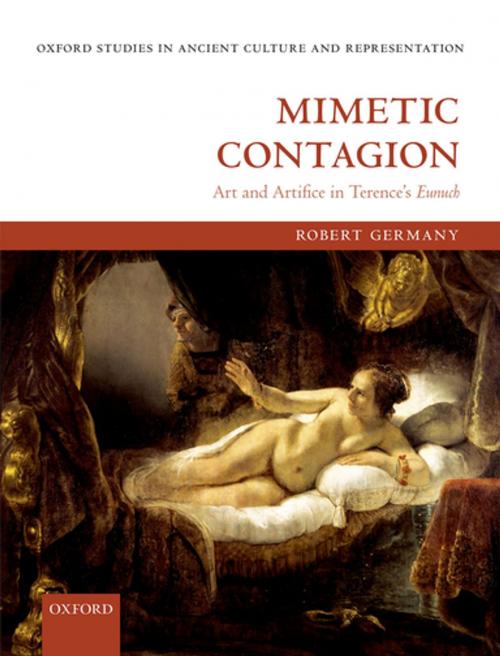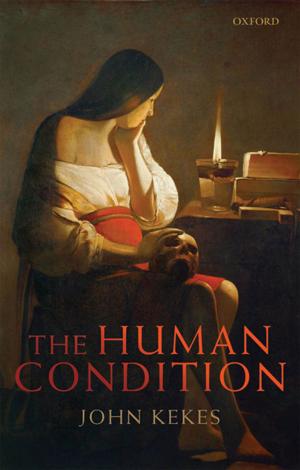Mimetic Contagion
Art and Artifice in Terence's Eunuch
Nonfiction, History, Ancient History, Rome, Fiction & Literature, Literary Theory & Criticism| Author: | The late Robert Germany | ISBN: | 9780191091117 |
| Publisher: | OUP Oxford | Publication: | October 20, 2016 |
| Imprint: | OUP Oxford | Language: | English |
| Author: | The late Robert Germany |
| ISBN: | 9780191091117 |
| Publisher: | OUP Oxford |
| Publication: | October 20, 2016 |
| Imprint: | OUP Oxford |
| Language: | English |
When we are confronted with a work of art, what is its effect on us? In contrast to post-Enlightenment conceptions, which tend to restrict themselves to aesthetic or discursive responses, the ancient Greeks and Romans often conceived works of art as having a more dynamic effect on their viewers, inspiring them to direct imitation of what they saw represented. This notion of 'mimetic contagion' was a persistent and widespread mode of framing response to art across the ancient world, discernible in both popular and elevated cultural forms, yet deployed differently in various historical contexts; it is only under the specificity of a particular cultural moment's concerns that it becomes most useful as a lens for understanding how that culture is attempting to negotiate the problems of representation. After framing the phenomenon in terms general enough to be applicable across many periods, literary genres, and artistic media, this volume takes a particular literary work, Terence's Eunuch, as a starting point, both as a vivid example of this extensive pattern, and as a case study situating use of the motif within the peculiarities of a particular historical moment, in this case mid-second-century BC Rome and its anxieties about the power of art. One of the features of mimetic contagion frequently noted in this study is its capacity to render the operation of a particular work of art an emblem for the effect of representation more generally, and this is certainly the case in the Eunuch, whereby the painting at the centre of the play functions as a metatheatrical figure for the dynamics of mimesis throughout, illustrating how the concept may function as the key to a particular literary work. Although mimetic contagion is only one available Greco-Roman strategy for understanding the power of art, by offering an extended reading of a single work of literature through this lens, this volume demonstrates what ramifications closer attention to it might have for modern readers and literary criticism.
When we are confronted with a work of art, what is its effect on us? In contrast to post-Enlightenment conceptions, which tend to restrict themselves to aesthetic or discursive responses, the ancient Greeks and Romans often conceived works of art as having a more dynamic effect on their viewers, inspiring them to direct imitation of what they saw represented. This notion of 'mimetic contagion' was a persistent and widespread mode of framing response to art across the ancient world, discernible in both popular and elevated cultural forms, yet deployed differently in various historical contexts; it is only under the specificity of a particular cultural moment's concerns that it becomes most useful as a lens for understanding how that culture is attempting to negotiate the problems of representation. After framing the phenomenon in terms general enough to be applicable across many periods, literary genres, and artistic media, this volume takes a particular literary work, Terence's Eunuch, as a starting point, both as a vivid example of this extensive pattern, and as a case study situating use of the motif within the peculiarities of a particular historical moment, in this case mid-second-century BC Rome and its anxieties about the power of art. One of the features of mimetic contagion frequently noted in this study is its capacity to render the operation of a particular work of art an emblem for the effect of representation more generally, and this is certainly the case in the Eunuch, whereby the painting at the centre of the play functions as a metatheatrical figure for the dynamics of mimesis throughout, illustrating how the concept may function as the key to a particular literary work. Although mimetic contagion is only one available Greco-Roman strategy for understanding the power of art, by offering an extended reading of a single work of literature through this lens, this volume demonstrates what ramifications closer attention to it might have for modern readers and literary criticism.















